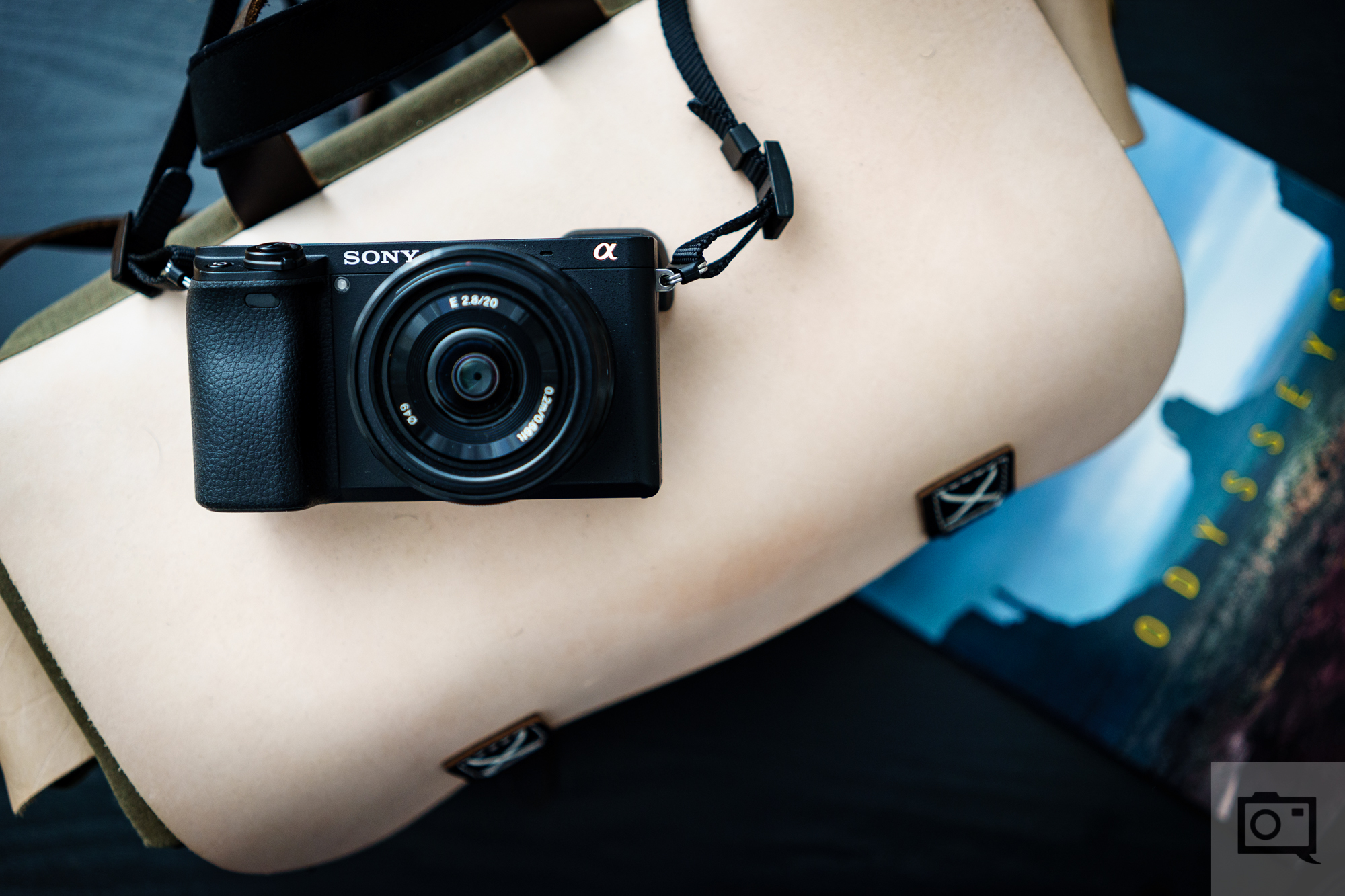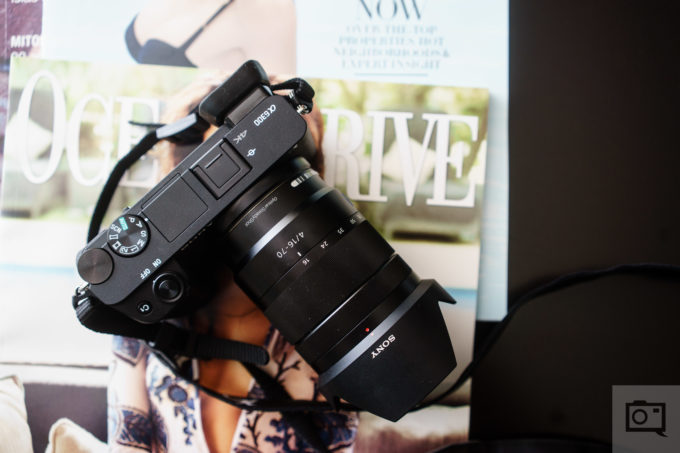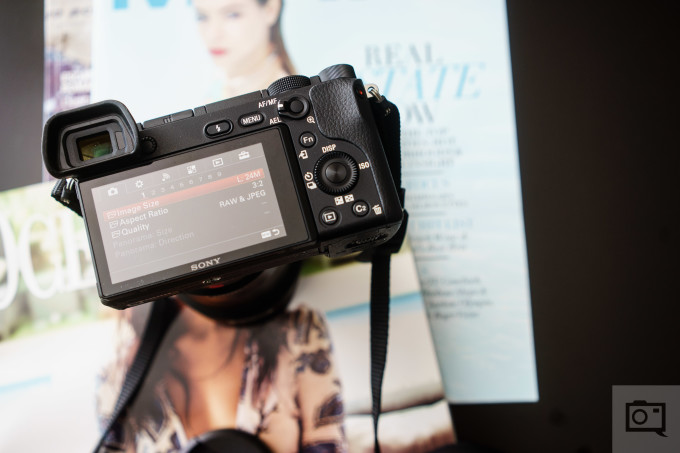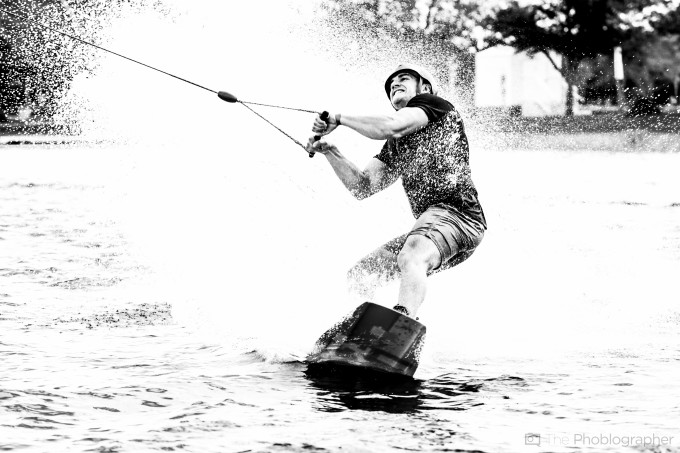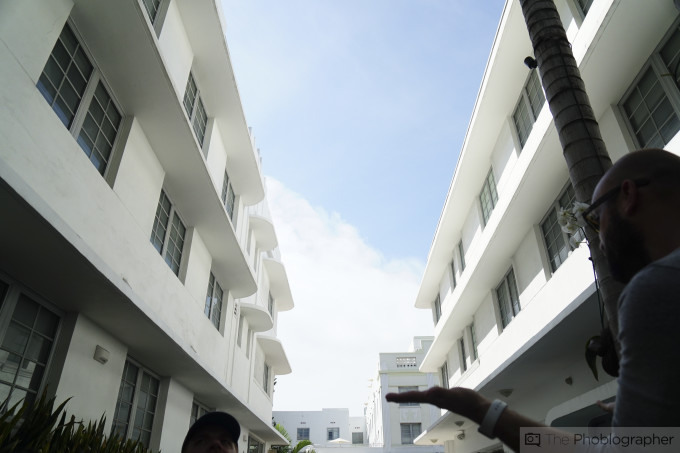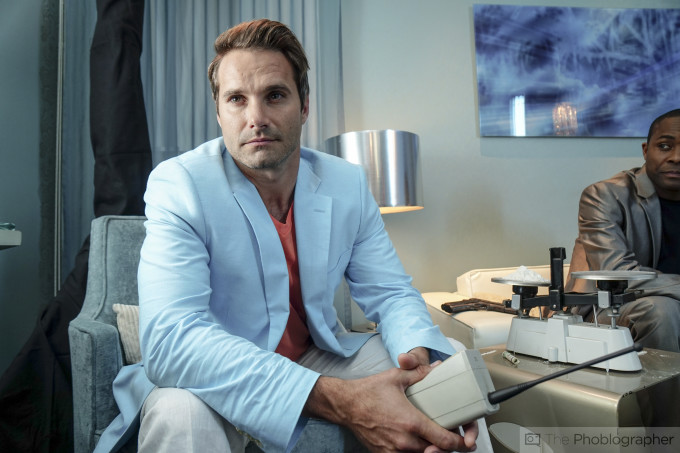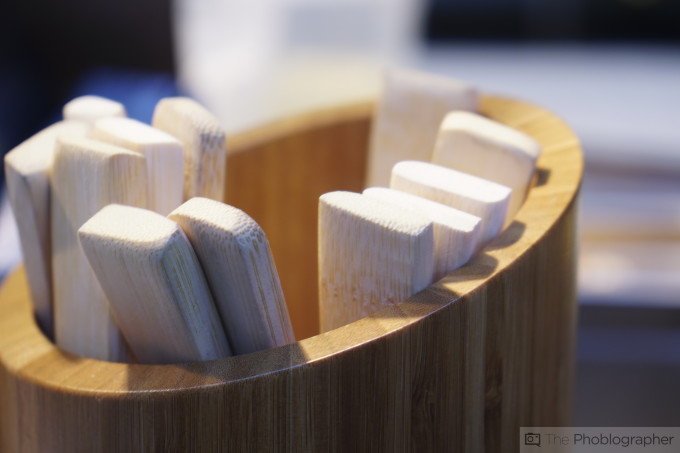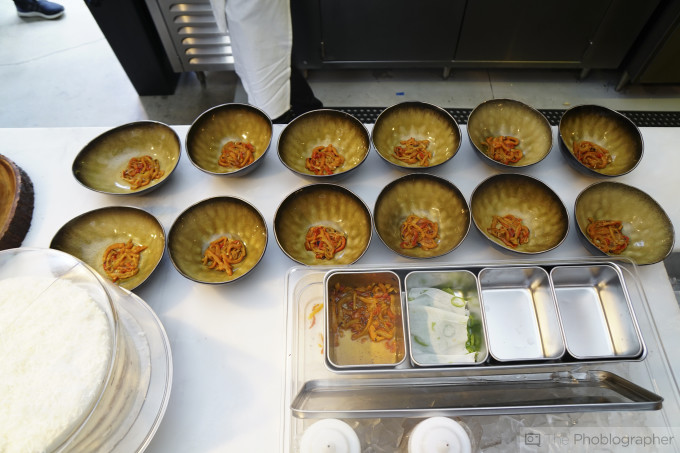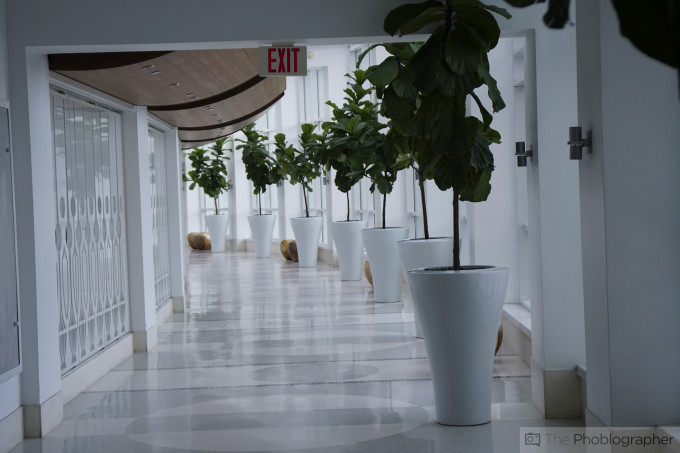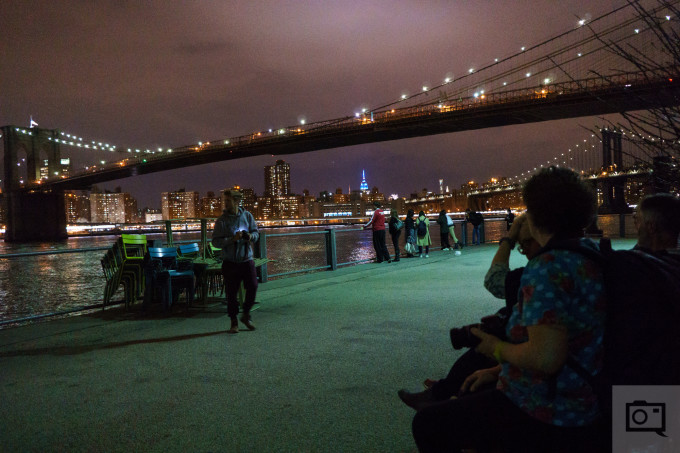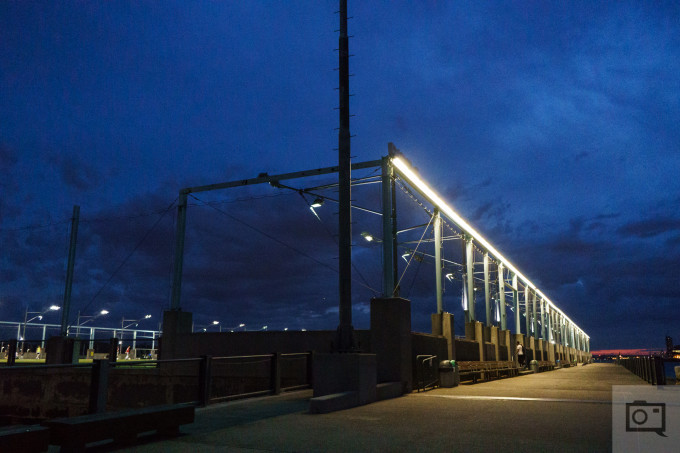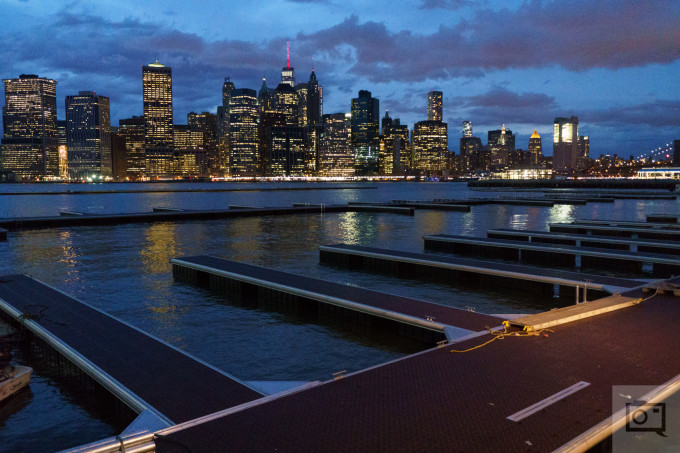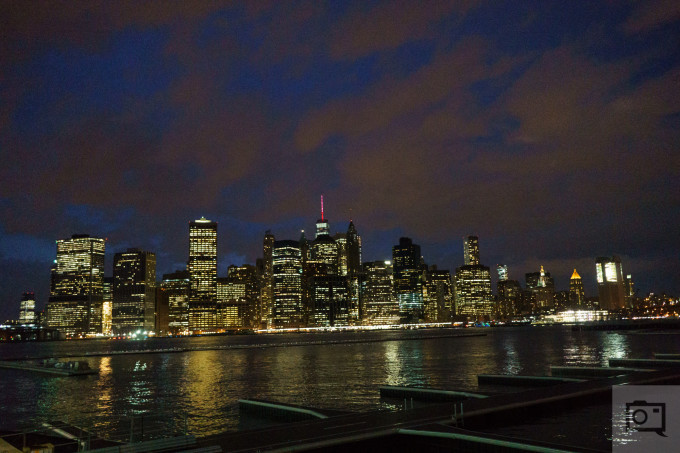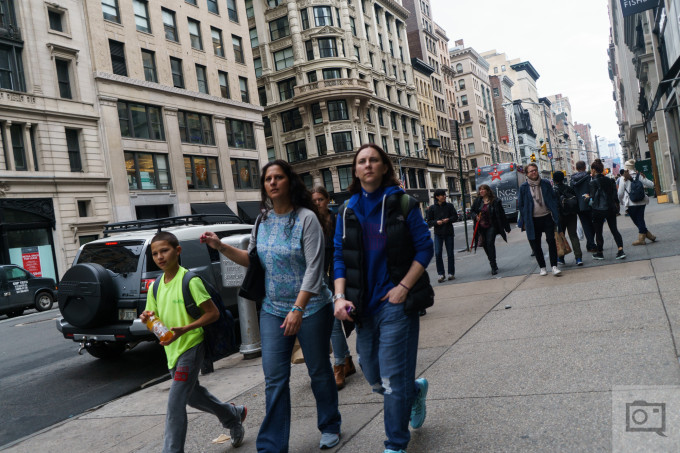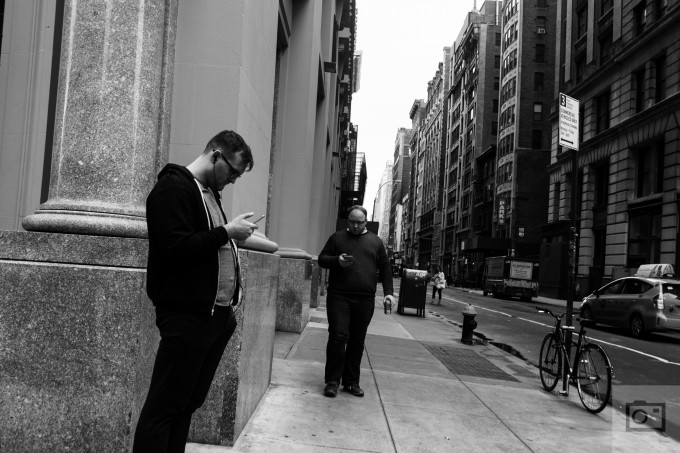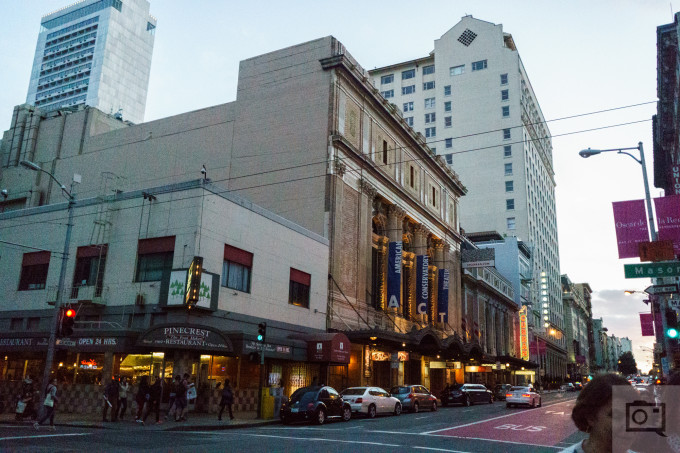At this point in the camera game, consumers have two really big, badass APS-C sensor cameras that they can get: the Sony a6300 and the Fujifilm X Pro 2. Considering that they’ve got a larger marketshare, the Sony a6300 is bound to outsell the X Pro 2. Backing up that prediction is the improved autofocus on the a6000 (that didn’t really need it as it is), the 4K video recording upgrades, weather sealing, and a few other updates which aren’t truly that large per se.
With an ISO range from 100-51,200 along with other features like the 4D focus system working in conjunction with the 425 phase detection autofocus points and combined with up to 11 fps shooting capabilities, the little camera is the equivalent of the Lord of the Rings’ Gimli. Put it down for a second, and it’ll beg to be shot with.
While the insides are brand new and the overall experience of using the camera is still really the same as it ever was (and that isn’t a bad thing) I argue that it’s time for an ergonomic update.

Pros and Cons
Pros
- Excellent autofocus
- Sony’s highlight recovery has vastly improved
- Nice JPEG output
- Weather sealing
- Nice, compact size
- Ergonomic layut of the controls is very intuitive
Cons
- At this stage, the A6000 series of cameras desperately need a front exposure dial
- High ISO output above 6400 loses details fast
- Low light AF performance lags behind both the Sony a7s II and the Sony a7r II
- Accidental video recording is bound to happen
Gear Used
The Sony a6300 was used with the Sony 20mm f2.8, 70-200mm f4 OSS, Lensbaby 56mm Velvet f1.6, and the Adorama Flashpoint Zoom Lion flash.
Tech Specs
Specs taken from the Adorama listing.
- Lens Mount
- Sony E-Mount
- Camera Format
- APS-C (1.5x Crop Factor)
- Pixels – Actual
- 25 Megapixel
- Pixels – Effective
- 24.2 Megapixel
- Maximum Resolution
- 24 MP: 6000 x 4000
- Imaging – Aspect Ratio
- 3:2, 16:9
- Sensor
- Type: CMOS
Size: 23.5 x 15.6mm - File Formats
- Still Images: JPEG, RAW
Movies: AVCHD Ver. 2.0, MP4, MPEG-4 AVC/H.264, XAVC S
Audio: AAC LC, AC3, Dolby Digital 2ch, Linear PCM (Stereo) - Bit Depth
- 14-bit
- Dust Reduction System
- Yes
- Memory Card Type
- Memory Stick Pro Duo
Memory Stick PRO HG-Duo
SD
SDHC
SDXC - Video Recording
- Yes, NTSC/PAL
- Image Size (Pixels) – NTSC
- XAVC S 4K: 3840 x 2160 (30p/100 Mbps, 30p/60 Mbps, 24p/100 Mbps, 24p/60 Mbps), XAVC S HD: 1920 x 1080 (60p/50 Mbps, 30p/50 Mbps, 24p/50 Mbps, 120p/100 Mbps, 120p/60 Mbps), AVCHD: 1920 x 1080 (60p/28 Mbps/PS, 60i/24 Mbps/FX, 60i/17 Mbps/FH, 24p/24 Mbps/FX, 24p/17 Mbps/FH), MP4: 1920 x 1080 (60p/28 Mbps, 30p/16 Mbps), 1280 x 720 (30p/6 Mbps)
- Image Size (Pixels) – PAL
- XAVC S 4K: 3840 x 2160 (25p/100 Mbps, 25p/60 Mbps), XAVC S HD: 1920 x 1080 (50p/50 Mbps, 25p/50 Mbps, 100p/100 Mbps, 100p/60 Mbps), AVCHD: 1920 x 1080 (50p/28 Mbps/PS, 50i/24 Mbps/FX, 50i/17 Mbps/FH, 25p/24 Mbps/FX, 25p/17 Mbps/FH), MP4: 1920 x 1080 (50p/28 Mbps, 25p/16 Mbps), 1280 x 720 (25p/6 Mbps)
- Aspect Ratio
- 16:9
- Video Clip Length
- Up to 29 Minutes 59 Seconds
- Audio Recording
- Built-in Mic: With Video, Stereo
Optional External Mic: With Video, Stereo - Focus Control
- Focus Type: Auto & Manual
Focus Mode: Automatic (A), Continuous-servo AF (C), Direct Manual Focus (DMF), Manual Focus (M), Single-servo AF (S)
Autofocus Points: Phase Detection:425
Contrast Detection:169 - Viewfinder
- Type: Electronic
Size: 0.39″
Pixel Count: 2,359,296
Eye Point: 23.00mm
Coverage: 100%
Magnification: Approx. 1.07x
Diopter Adjustment: – 4.0 to +3.0 m - Display
- 3″ Rear Screen Tilting LCD (921,600)
Screen Coverage: 100% - ISO Sensitivity
- Auto, 100-25600 (Extended Mode: 100-51200)
- Shutter
- Type: Electronic & Mechanical
Speed: 30 – 1/4000 second, Bulb Mode - Metering Method
- Center-weighted average metering, Multi-zone metering, Spot metering
- Exposure Modes
- Modes: Aperture Priority, Auto, Intelligent Auto, Manual, Movie, Program, Scene Selection, Shutter Priority, Superior Auto, Sweep Panorama
Metering Range: EV -2.0 – EV 20.0
Compensation: -5 EV to +5 EV (in 1/3 or 1/2 EV steps) - White Balance Modes
- Auto, Cloudy, Color Temperature, Daylight, Flash, Fluorescent (Cool White), Fluorescent (Day White), Fluorescent (Daylight), Fluorescent (Warm White), Incandescent, Shade, Underwater
- Continuous Shooting
- Up to 11 fps at 24.2 MP for up to 21 frames in raw format
Up to 11 fps at 24.2 MP for up to 44 frames in JPEG format
Up to 8 fps
Up to 6 fps
Up to 3 fps - Flash Modes
- Auto, Fill-in, Hi-Speed Sync, Off, Rear Sync, Red-eye Reduction, Slow Sync, Wireless
- Built-in Flash
- Yes
- Flash Guide Number
- 19.69′ (6m) ISO100
- Flash Max Sync Speed
- 1 / 160 seconds
- Flash Compensation
- -3 EV to +3 EV (in 1/3 or 1/2 EV steps)
- Dedicated Flash System
- TTL
- External Flash Connection
- Hot Shoe, Wireless
- Self Timer
- 10 seconds, 5 seconds, 2 seconds
- Connectivity
- 1/8″ Microphone, HDMI D (Micro), Micro-USB, USB 2.0
- Wireless LAN (Built-in)
- Wi-Fi Compatible, IEEE802.11b/g/n (2.4 GHz band)
Playback of still images and movies on smartphones, PCs and TVs - Battery
- 1x NP-FW50 Rechargeable Lithium-ion Battery Pack, 7.2 VDC, 1080 mAh
- AC Power Adapter
- AC-PW20 (sold separately)
- Operating Temperature
- 32 to 104deg F (0 to 40deg C)
- Dimensions (WxHxD)
- 4.7 x 2.6 x 1.9″ (120.0 x 66.9 x 48.8mm) excluding protrusions
- Weight
- 14.25 oz (404g) with battery and memory card
Ergonomics
Taken from the first impressions post.
The Sony a6300 mirrorless camera is pretty darn small. Then again, all of the flagship APS-C cameras always have been too. If you’re a veteran Sony user, then this camera will make total sense to you. On top, what you’ll find are the on/off switch, shutter release, custom function buttons, mode dial, exposure dials, hot shoe and brandings.
The front of the camera has a lens release button and a grip. Otherwise though, it’s very minimal.
When you come to the back of the camera, you’ll find all the controls. For some it may be intimidating, while for others it’ll be fine. The LCD screen is the flippy type, the EVF is on the top left, and the button layout lends itself to the right handed person. Plus there are buttons on the top area.
Like many other higher end Sony products, the LCD screen isn’t touch capable. Why? I’m not quite sure.
Build Quality
The Sony a6300 promises dust and splash resistance; and indeed that what it does. At one point during the review period, I took the camera into a small rainfall. It survived and continued to operate with no problems at all.
Ease of Use
If you’re not a fan of Sony’s menu system, then good news: it’s still the same!
Sarcasm aside, here’s where I think Sony now needs to reevaluate the ergonomics of this lineup of cameras. For years, they haven’t changed: look at the Sony NEX 6, the Sony a6000 and the Sony a6300 and they’re all very much the same. These were amongst their higher end cameras, and now there is the a7 series.
If Sony really wants to make the rangefinder style of camera body even more serious then there needs to be a front exposure dial just like there is with the a7 series. Those cameras have three exposure dials overall while the a6xxx series has only two. Additionally, I’ve always felt that the grip from this lineup of cameras is a bit too prominent for me. When I personally hold a camera in real life use, I put more emphasis into my thumb pushing onto the camera than my other fingers gripping it. Mix that in with my Carpal Tunnel syndrome and that works out even more to my point.
With that said though, there is nothing that really prevent you from being able to shoot quickly and go with this camera with the exception of a lack of super fast access to all three exposure parameters. The ergonomic use is overall very good; but my ideas and beliefs are that it’s time that the system evolves.
Autofocusing
Autofocusing with the Sony a6300 is a mix bag in some ways. Before I get to this though, know that overall it’s quite solid–but where it falls short is in situational events.
- When it came to tracking high speed moving athletes, many journalists has problems tracking them and locking focus onto the fast moving subjects when shooting wide open. To be very fair, I feel like this is an obvious one and that real sports shooters often stop the lens down a bit to ensure that their subjects are in focus.
- In very low light situations, the camera tends to hunt for a subject and misfocuses around 80% of the time.
In good lighting and for street photography though, this camera will nail it almost every time. You can generally have full confidence in this.
Comparatively speaking though, a very odd thing happens. The sony a6300 is faster to focus in good lighting, but in low lighting the Fujifilm X Pro 2 is faster to focus and more accurate through and through. Yes, the day has come where a Fujifilm camera can actually outpace a Sony is a specific situation.
Crazy, huh?
Metering
During my tests with the camera, I found that the sensor tended to want to underexpose by around 1/3rd of a stop. Based on the standard Sunny 16 test results, this makes sense and it very typical for Sony cameras.
Image Quality
As always, EXIF data is in the file name.
Here’s where the Sony a6300 gets very interesting. Sony has greatly improved on what they can render from the highlights in an image, but the 24MP APS-C sensor at its core could use some improvement in the high ISO arena.
Like every Sony camera though, it’s capable of delivering superb quality when paired with good glass.
JPEG Quality
The JPEGs from the Sony a6300 are generally pretty good. But if you’re Sony’s very good wireless transferring abilities to port the image to your phone, you’re going to want to do edits. Some on the internet think Sony’s colors can be too vibrant, but it seems like Sony has been toning that down a bit with this camera.
Comparatively speaking, I believe Olympus and Fujifilm deliver better JPEGs; but to each their own.
RAW File Versatility
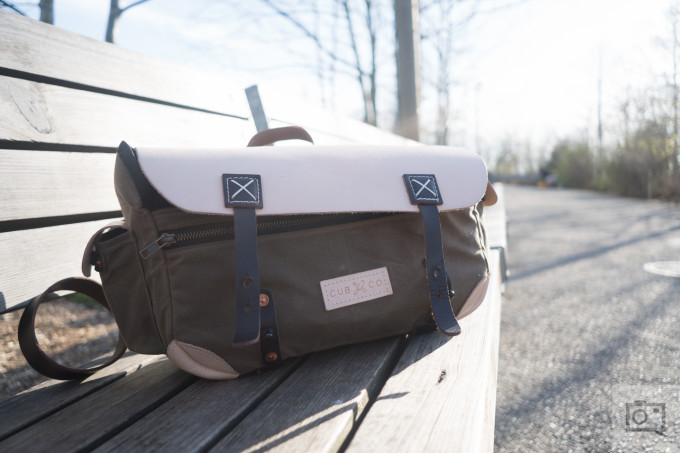
The above image is an original RAW file converted to a JPEG. It’s pretty much straight out of camera.
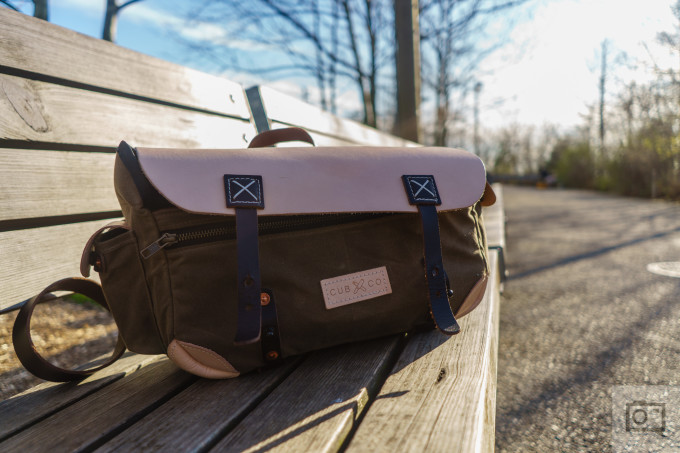
The file was given some massaging and I was easily able to turn it into something much better by nerfing the highlights, boosting the shadows and working with the color levels. Obviously, it takes a skilled editor to be able to do this, so your experience may vary.
What I’ve really noticed is how much Sony has improved when it comes to rendering the highlights in a scene. Sony has always had incredible detail capture from the shadows, but they lacked with the highlights. In the Sony a6300 though, you generally don’t have to worry.
With all this said though, that don’t mean that you should go ahead and just throw the laws of exposure out the window–that would be just stupid and that’s in regards to good metering methods being used to begin with.
High ISO Output
At ISO 6400, you’ll get very good files that are on par with the Fujifilm X Pro 2. For the most part, that’s fine and most people may not care about anything above that. But for what it’s worth, the Fujifilm X Pro 2 does a better job above 6400 ISO of controlling noise and making the files generally look better. That’s where Sony can improve here.
Again though, the files aren’t bad. They’re all completely usable, but Fujifilm just does a better job over a certain point.
Extra Image Samples
Conclusions
Likes
- Fast autofocus
- The best from Sony, just a bit more updated
- Not much evolution with this camera on the outside but still well built overall
- Great highlight recovery
- Great color versatility
Dislikes
- I actually like going above ISO 6400 and Fujifilm will give me more of a reason to do that than Sony will
- Ergonomics should be evolving at this point.
In many ways the Sony a6300 is an excellent camera. Great image quality, very versatile RAW files, a small size, great autofocus, and more. What more could you possibly ask for?
My qualms with it have to do with the fact that the high ISO output is starting to fall behind the competitor and that I genuinely feel like the ergonomics need to take a step up at this point. Otherwise, it’s a very solid camera.
The Sony a6300 receives five out of five stars. Want one? Check out the Amazon listing for $1,029.


